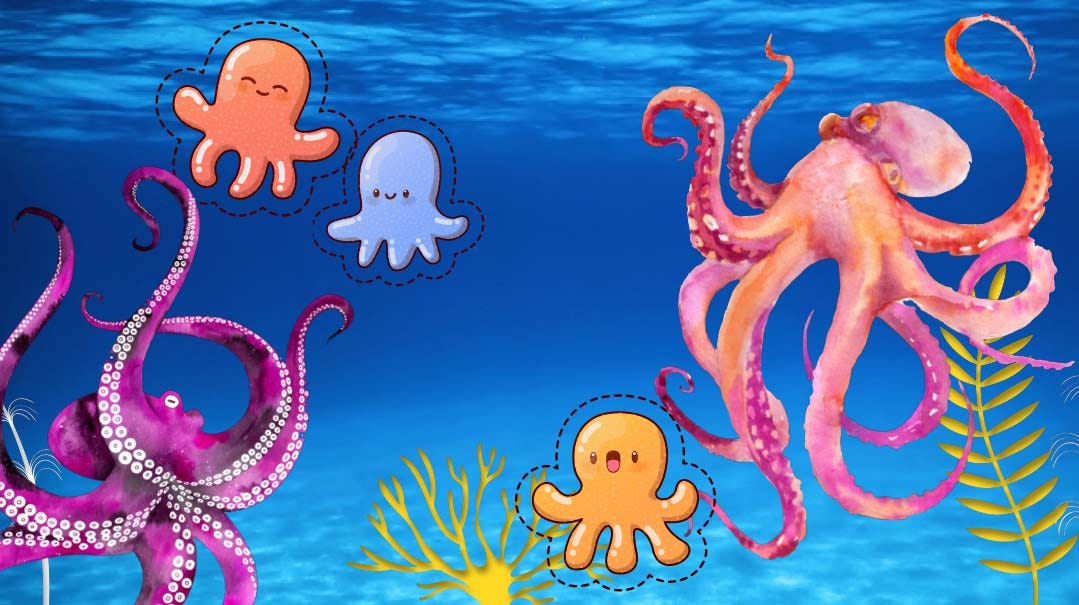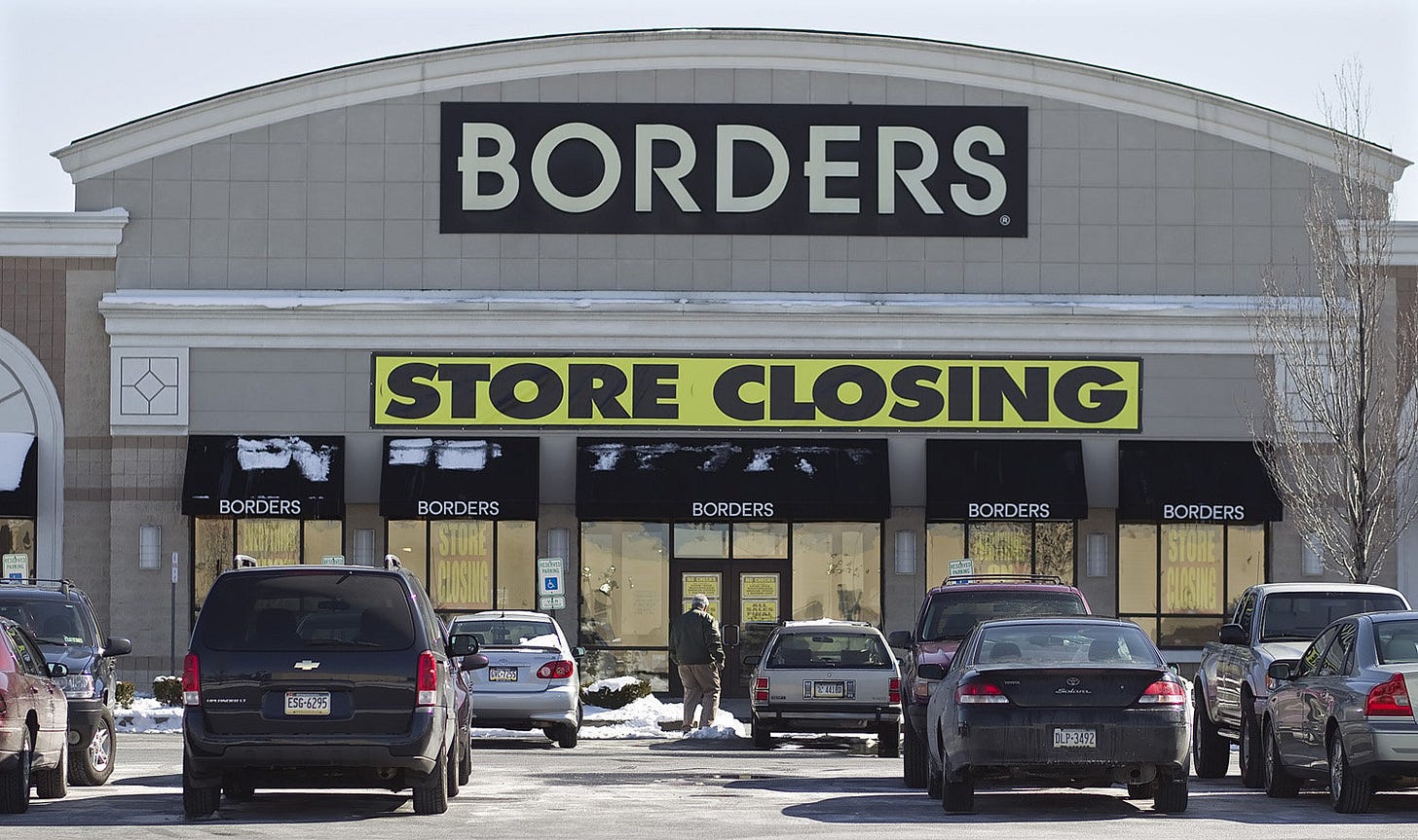The Demise of Single-State Brands Part 4
For Brands To Become More Valuable They Need To Become More Useful
In 2016, strange things started happening at the Bermuda Aquarium. Every morning, staff would come in to find exhibit lids mysteriously opened, empty shells, and the leftovers of other "guests" scattered over the floor— the remains of what could only be called aquatic mischief.
The mystery grew deeper for weeks. Then, one night, they caught the culprit.
It turned out that their common octopus was undertaking his own research after everyone went home for the night. I'm not sure if the staff gave their octopus a name, so let's call him Fritz, after one of Bermuda's most famous prison escapees. Anyway, they found out that Fritz would sneak out of his tank while the staff was sleeping, go to nearby exhibits, try the local food, and sneak home before dawn. He’d turned the whole aquarium into his own playground.
The staff had to make a choice that would affect everything that came after: build higher walls to contain Fritz’s nocturnal adventures or redesign his habitat.
They made the choice to redesign. They knew something important about how smart octopuses are: Fritz needed a different kind of habitat—one that could adapt to his interests instead of limiting them.
My fourth and final installment in this series isn't really about octopuses. It's about you and your changing role as a modern brand builder.
The Brand Modern Manager's Dilemma
Every brand manager today faces the same choice as the staff of Bermuda’s aquarium, though most don't realize it.
Their brands—like Fritz—are desperate to explore. They want to test boundaries, discover new possibilities, and venture beyond the carefully constructed guidelines and approval processes that their managers have built around them. But exploration feels dangerous. What if the brand "escapes"? What if customers misunderstand? What if consistency breaks down?
So we do what seems rational: we build higher walls.
We are very good at making our own "brand prisons," which are really just complicated systems that keep our brand in check while pretending to be strategic frameworks. We police every pixel like Vatican guards, convinced that one misplaced comma will cause our entire brand to collapse into chaos. We've made the process of getting ideas approved so complicated that by the time they hit the market, they've been researched and second-guessed into creative purgatory.
Then we sit in conference rooms and ask each other why our brand feels dead, why our customers don't seem interested, and why our competitors are somehow more lively even though they have smaller budgets.
We are now the aquarium staff, coming in each morning to find our carefully controlled environment just as we left it and wondering why nothing important is happening.
The Sacred Cows We’re Afraid To Slaughter
Here's the uncomfortable truth: When we're not building walls around our brands, we're building them around ourselves.
Four beliefs are so deeply ingrained in our field that it feels like professional heresy to question them. These are four sacred cows that keep us stuck with ways of doing things that worked in the past but don't work today, as savvy brand builders like Coca-Cola show us on a regular basis.
Sacred Cow #1: "Consistency is King" While we obsess over typographic perfection, our customers are having messy, inconsistent, beautifully human experiences with our brand across seventeen different touchpoints we don't even track. We pursue consistency but end up with rigidity.
Sacred Cow #2: "Control Equals Quality" Discord, Roblox, and TikTok are three of the most valuable modern brands. Each has emerged from a state of controlled chaos rather than from controlled messaging. They grew by letting go, not holding tight. We've mistaken control for craftsmanship.
Sacred Cow #3: "Awareness Drives Everything" We chase impressions while our competitors build communities. We optimize for recall while they optimize for relationships. We know exactly how many people have heard of our brand, but we have no idea how many people would miss it if it went away.
Sacred Cow #4: "Professional Distance Creates Objectivity" We use two-way mirrors to do research and algorithmic filters to look at behavior, and then we wonder why our insights seem clinical and our connections seem empty. The brands that are winning today aren't just watching culture—they're making it.
These beliefs aren't just limiting our brands. They're limiting us as brand builders.
The Entrenchment Trap
A senior executive of a struggling jewelry brand told me something recently that’s been rolling around in my head a lot: "We’re having trouble not because we can’t see the future of our industry. We’re struggling because we can’t see our brand in her future," by which she meant her customers' future.
Her observation cut right to the heart of what's really happening in marketing departments around the world. There’s ample evidence that we need new approaches to brand building. The case studies are easy to understand. So are the principles. What's missing isn't more knowledge, resources, or capability. More professionalism.
It's courage.
Not the courage to take big risks or make dramatic changes. But just the bravery to try small things. To find out what customers really think instead of what we want them to think. To break a rule that doesn't really matter and see what happens. The courage to kill a few sacred cows.
The courage to be like Fritz.
Experiments in Courage
This week, I want you to try this. Three small tests that won’t cost you anything, don't need approval, don't need committees, but do require you to rethink how you've been running your brand for years.
Experiment 1: Find Your Brand's Hidden Meanings
Ask five customers this simple question: "What does our brand do for you?"
Not what you think it does. What they say it does.
This challenges Sacred Cow #4: the belief that keeping a professional distance makes things clearer. Your customers are already seeing benefits and meanings in your brand that you've never noticed before. They're using your products in ways you didn't mean for them to. They're using words that aren't in your marketing materials to talk about your business.
That's your brand exploring beyond its boundaries.
Experiment 2: Break One Small Rule
Pick the most inconsequential brand guideline you have—the one that makes everyone roll their eyes in meetings.
Break it. Just once. In one small place.
Use the wrong font in an internal email. Try a different tone in a customer response. Answer a question you're "not supposed to" answer.
This challenges Sacred Cow #1—that consistency equals strength. See what happens. Not to the value of your brand, but to how good the conversation is. The rules we think will keep our brands safe are often the same ones that keep them from resonating with customers.
Experiment 3: Let Customers Complete the Sentence
Find one place where you always finish customers' thoughts for them. Where you assume you know what they're going to say next.
Don't finish their sentences. Ask them something you don't already know the answer to.
Instead of saying "Here's why you should choose us," say "What would make this perfect for you?"
Instead of saying, "Our solution provides," ask, "What do you need this to do?"
This challenges Sacred Cow #2—that control equals quality. Give customers space to explore with you and see what they come up with. You might discover that letting go actually increases your influence with her.
The Professional Identity Crisis
When I first started looking into quantum brands three years ago, I thought I was writing about new ways to build a brand. I now realize that what I was writing about was much more personal: my own professional identity.
Changing from managing brands to entangling them in customers’ lives is more than just a change in methodology; it's also a change in how we see ourselves. It means trading the safety of guidelines for the adventure of principles. Surety for possibility. Control for impact.
This is hard. We have built our careers on old-fashioned ideas about how to make a brand valuable to our customers. Questioning those assumptions feels like questioning our worth as professionals. Do we still know what we're doing? Are we any good at it?
But I've learned that the brands that will do well in the next ten years won't be the ones with the most money or the most consistent messages. They’ll be led by people who are brave enough to allow their brands to evolve.
Consider the difference between a home and a house. You can measure, value, and sell a house like any other piece of property. A home is a very different thing. It's a space that changes over time and is full of emotions because of the lives that are lived there. You can't just look at its square footage to figure out how much it's worth because the people who live there are always giving it new meaning.
Traditional brands are like houses: they are fixed assets that are meant to work in stable markets. The brands that will last are homes—adaptive systems that get better as people work together to make sense of things and grow with their communities.
When I think about Fritz’s nightly adventures, I can't help but think about the brands we've lost, like Borders, Blockbuster, Saturn, and many more. These brands thought they were like the Australian lungfish. This is an ancient fish that hasn't changed in 100 million years because it’s so well suited to its environment. The lungfish survived because its world stayed the same. Ours won't.
The real question isn't whether you can afford to evolve. It's whether you can afford not to.
What Would Fritz Do?
The staff at Bermuda's aquarium could have made the walls taller in Fritz’s tank. They could have installed better locks, more advanced containment systems and monitoring technologies. They could have turned Fritz's habitat into a fortress.
Instead, they chose to honor his intelligence, curiosity, and courage.
Your brand is just as smart as Fritz. It's already going beyond its limits and getting entangled in its community, like when customers use your product in ways you didn't expect, when customers talk about value you never advertised on social media, and when sales conversations veer off-script in a wonderful way.
You can't stop this customer-led exploration from happening. You only need to decide if you want to keep your sacred cows or slay them.
So, here's my challenge: try one experiment this week. Just one.
Slaughter one sacred cow. Break one little rule. Ask a question that no one expects.
Take a look at what happens when you give your brand some space. Pay attention to what customers do when you let them explore with you. Notice how it feels to nurture your brand rather than control it.
And then tell us what you discover.
The quantum revolution isn't coming to brands; it's already here. The only question is whether you'll adapt quickly enough to harness it or remain safely contained while the world transforms around you.
My best advice. Be like Fritz.
What quantum experiment will you try this week? Share your discoveries and join the conversation about brands that choose exploration over containment.








Totally agree! Brands that I have created and built always allow for flexibility and exploration to evolve… as Fritz and humans need new discoveries and always allow levels of strategic PLAY!